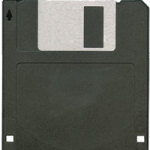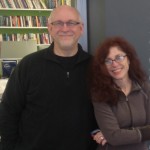 “Pathfinding: A Cultural Approach to Preservation, Archiving, and Dissemination”
“Pathfinding: A Cultural Approach to Preservation, Archiving, and Dissemination”
URL: http://dtc-wsuv.org/wp/pathfinders
Abstract:
This talk centers on an approach to the preservation, archiving, and dissemination of digital media, such as computer games, electronic literature, and virtual worlds, that takes into account the cultural context of a work. Such an approach has not yet been fully explored, but based on the research undertaken for the Pathfinders project, I argue that it can add an important component missing in current preservation techniques.
Today I am giving a talk to students in Honors 301 about the Pathfinders project. It occurs to me that in doing so, I should try to tie into the notion of obsolescence with digital objects they value (as I focus on those I value): Video Games.
Links:
 “Cloud Gaming to Make Consoles Obsolete” : http://advanced-television.com/2014/03/05/cloud-gaming-to-make-consoles-obsolete/
“Cloud Gaming to Make Consoles Obsolete” : http://advanced-television.com/2014/03/05/cloud-gaming-to-make-consoles-obsolete/
Pathfinder’s Vimeo Channel: https://vimeo.com/channels/elitpathfinders
Research Question:
What happens to literary works meant to be experienced on a computing device when the software and computer systems with and for which they are created update, change or become obsolete? Do we allow these works also to become obsolete, or do we find ways to preserve them since they are important literary and cultural artifacts?
Goals:
- To preserve seminal works of early digital literature
- To innovate “collection” as an approach to preservation, archiving, and dissemination (PAD) through the “traversal”
- To inspire other scholars to undertake PAD projects for digital objects
- To inform developers and artists of best practices for creating works with PAD in mind
Methodology:
Videotaped interviews and traversals* by authors and by two users who interacted with each work
All videos, as well as sound files, images, binary code, and scholarly commentary, are collected and prepared for presentation in a multimedia book produced in coding languages HTML5, CSS3, and Javascript. This book will be distributed to the public for free via the Pathfinders website as well as other venues such as the ELO website, HASTAC, and MLA, among others. Additionally, a co-authored print-based book, entitled Paths to PAD: Critical Essays about Early Digital Literature and Its Preservation, that will accompany the multimedia book and containing longer critical essays is being produced.
Findings:
1. Through our research we have found that the most stable platforms for digital media development are web-based languages (HTML5, CSS3, Javascript) and video. Unsurprisingly proprietary software poses challenges to long-term preservation of digital objects.
2. We also discovered that Collection, despite the difficulties it poses in terms of maintaining platforms over time, offers an important component missing from Emulation and Migration––that is, the cultural context in which the work was created.
3. Finally, we have come to see that when preserving digital works, all three approaches should be explored in order not to missing an important aspect of the work since they each offer important affordances for understanding and interpreting them.
* Traversals entailed the author of each work, as well as two additional readers, to read the work aloud, explaining the choices made as they encountered and clicked on hyperlinks found in the work, while we captured these readings on video. Following this process, authors and readers were interviewed about their experience and their comments documented. This approach to Collection had not yet been used.








